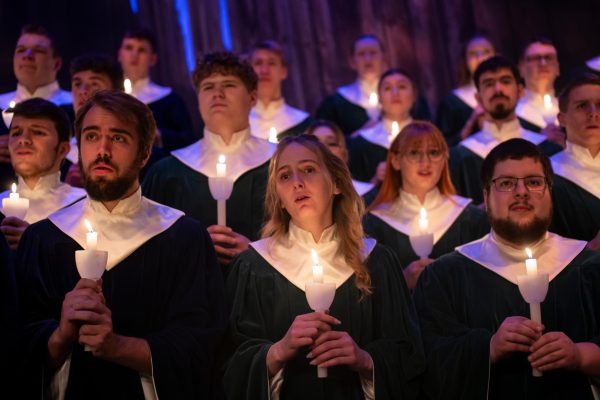The Catholic Church needs reform
Leadership in an organization that has committed crimes en masse for centuries should be radically restructured. The Catholic Church must be reformed in a way that ends the system that led to countless crimes, specifically the sexual abuse of hundrerds of thousands of children. Although structural change of the church must come from the clerical leaders, I believe that Catholic individuals can encourage change in the church by ending their financial support of it.
While I believe that the Catholic Church desperately needs structural reform, there are many things about the institution that I admire. I deeply respect many of the religious practices of Catholics, such as baptism, the Eucharist, confirmation, and confession. I believe the tradition of devotions to be both meaningful and expressive. The problem lies with the corrupt priesthood.
The corruption in the Catholic Church’s priests runs far beyond the individual priests who have committed these heinous acts. The consistent erasure of these crimes, or acknowledgement without change, comes from the powerful system of clerical hierarchy.
Sexual abuse by priests is a national crisis, documented in all 50 states. It is estimated that 6,000 priests have been credibly accused of sexual misconduct, some by hundreds of people, in the United States alone. However, this is also an international failure of this powerful institution to protect its members by perpetuating rape culture. Since the 1950s, an estimated 330,000 children were victims of sex abuse within France’s Catholic Church. The abuse came from around 3,000 priests. Any institution that is able to cover up the crimes of 3,000 people has too much power.
These reported cases of clergy abuse are estimated to be a small portion of the centuries of abuse straight from the pulpit. The majority of sex crimes that have occurred under these conditions are now too old to prosecute through the courts, because of the statute of limitations or the deaths of either or all parties involved. Because the Catholic Church has such a large influence on society, there is also constant fear for victims taking on what is considered to be the ultimate moral authority, and a very influential organization. Just in 2007, the Catholic Church spent $615 million on sex abuse cases, most of which was spent in settlements paid to victims to not testify in court.
Although the mass uncovering of perpetual sexual abuse within the Roman Catholic Church began in 2002 with an article published in The Boston Globe, investigations and eventual cover-ups of these findings have been happening for decades. Structural problems within the Roman Catholic Church have failed in many ways to prevent and address ubiquitous sexual abuse.
The Catholic Church blunders in their reactions to these incidents by treating them as anomalies. They have a habit of treating such molestation cases as individual lapses in judgments by priests, instead of a phenomenon perpetuated by the structure of the church.
Additionally, many high-ranking Church officials orchestrated cover-ups. Instead of safeguarding children, many church officials concealed the abuse and protected the abusers. When a priest is exposed as a sex criminal, they are shuffled from one parish to another in order to avoid legal action or embarrassment.
When there is such an extreme imbalance of power built into the structure of a community, there is no way for subordinates to speak out against members at the top. There has to be major structural change in the high-ranking officials of the Roman Catholic Church. For clergy to be ashamed and regretful that these events have happened is no longer acceptable, and real structural action must be taken.
Over half of Americans who identify as Catholic believe that there must be significant changes in the structure of the church as a whole. In a 2020 survey by the Pew Research Center, six-in-ten Catholic Americans say they think the church should allow priests to marry and allow women to become priests.
Right now there is too much power and exceptionalism in the position of the priest. The whole structure of this clerical role is to marry the church, to even take celibacy vows. This structure sets up priesthood to be above the law, to live beyond the secular world. This position is also open only to a certain population: unmarried men.
While the change must come from within the leaders of the church, and the Pope himself, I urge Catholics to not monetarily assist the Catholic Church until structural change has been made. Priests should not be all-powerful, and a more open priesthood would assist in changing the whole power structure of the Catholic Church, effectively ending the centuries of child abuse.





